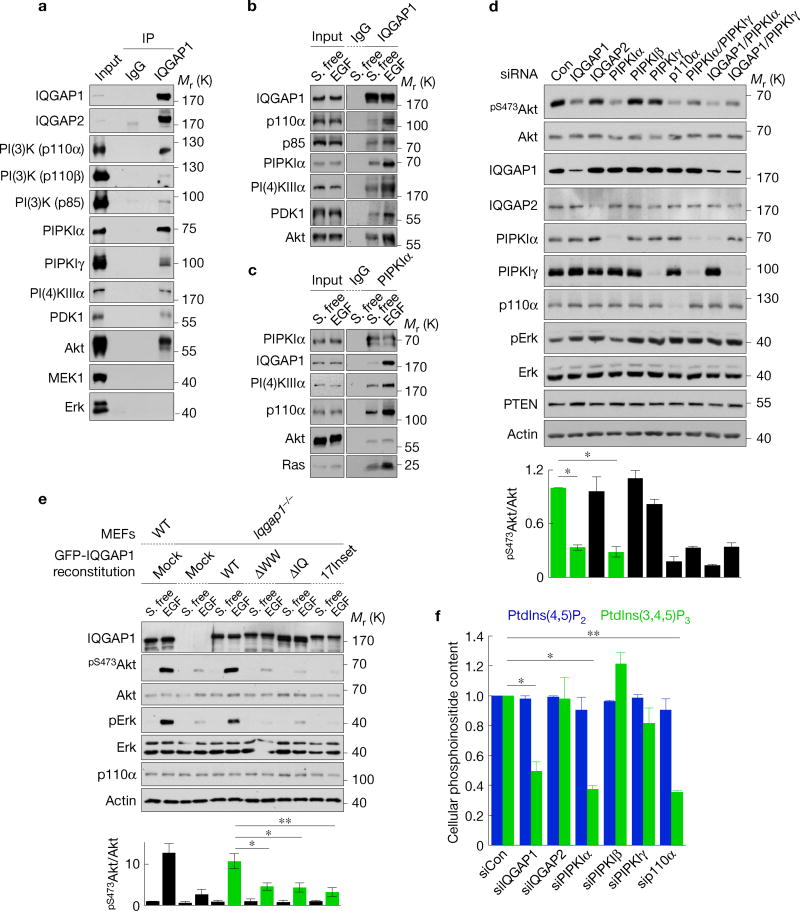Figure 1.
PIPKIα and IQGAP1 are required for PtdIns(3,4,5)P3 generation. (a) IQGAP1-associated proteins were analysed by immunoprecipitation in Hs578T cells. IgG, nonspecific immunoglobulin. (b,c) Changes in IQGAP1- (b) and PIPKIα- (c) associated proteins following EGF stimulation were analysed by immunoprecipitation. S. free, serum free. (d) Immunoblotting after RNAi of the indicated proteins in Hs578T cells (top), mean ± standard deviation (s.d.) of n = 3 independent experiments (bottom). P = 0.021, 0.016. Con, non-targeting siRNA. *P < 0.05; **P < 0.01; NS, not significant (Student’s t-test). (e) Iqgap1−/− mouse embryonic fibroblasts (MEFs) were reexpressed with the indicated IQGAP1 proteins (Supplementary Fig. 2a) and immunoblotted after EGF treatment (top), mean ± s.d. of n=3 independent experiments (bottom). P = 0.020, 0.015, 0.0083. (f) PtdIns(4,5)P2 and PtdIns(3,4,5)P3 contents after knockdown of the indicated proteins in Hs578T, mean ± s.d. of n=3 independent experiments. P=0.01, 0.01, 0.001. Source data for d,e,f can be found in Supplementary Table 1. Unprocessed original scans of blots are shown in Supplementary Fig. 7.

